Tapestry + Capri: Will It Work?
- Oops!Something went wrong.Please try again later.
- Oops!Something went wrong.Please try again later.
- Oops!Something went wrong.Please try again later.
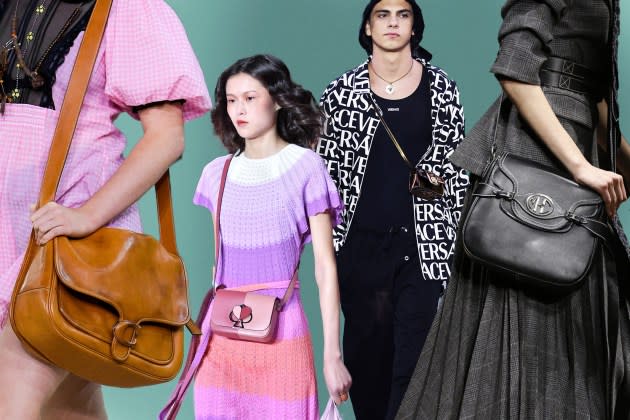
Tapestry Inc. has made its move — now chief executive officer Joanne Crevoiserat just has to stick the landing.
In a high-wire act that promises to remake the American fashion landscape, Tapestry Inc. cut a deal to buy Capri Holdings at a valuation of $8.5 billion, bringing together the Coach, Kate Spade and Stuart Weitzman brands with Capri’s Michael Kors, Versace and Jimmy Choo.
More from WWD
The combined company will have more than $12 billion in sales, with particular strength in the accessible luxury category with Coach and Michael Kors under one roof, as well as deep expertise and exposure to the handbag category and a growing luxury standout with Versace.
With that, Tapestry is set to become one of the largest U.S. fashion companies, bigger than VF Corp. with revenues of $11.6 billion last year, PVH Corp. with $9 billion and Ralph Lauren Corp. with $6.4 billion.
With the deal, Tapestry gets more scale, more exposure overseas, a chance to use the Coach game plan at Michael Kors and host of operational challenges.
In addition to bringing the two mammoth companies together, with plans for more than $200 million in annual cost synergies within three years, Crevoiserat will have to work on the various brands — particularly Michael Kors, which saw sales slip 1.8 percent to $3.9 billion last year.
Capri’s stock shot up 55.8 percent to $53.90 on Wall Street on Thursday, with investors holding back just a bit in case the deal gets tripped up, for instance by antitrust approvals. Tapestry’s stock fell 15.9 percent to $34.68, reflecting the usual jitters investors get when companies take on such a big operational challenge.
In an interview with WWD shortly after the deal was announced, Crevoiserat described the acquisition as simply the next step in Tapestry’s evolution.
“We’ve been on a transformation journey over the last few years,” the CEO said. “We’ve actually completely transformed our business. We’ve leaned into the brand building behind our iconic brands. We’ve created this consumer engagement platform that’s helping us deliver strong results. So we start from a position of strength and we see what we’ve built in this transformation as competitive advantages. Some of these capabilities, they’re important in today’s environment to connect with consumers, but they’re also scalable.”
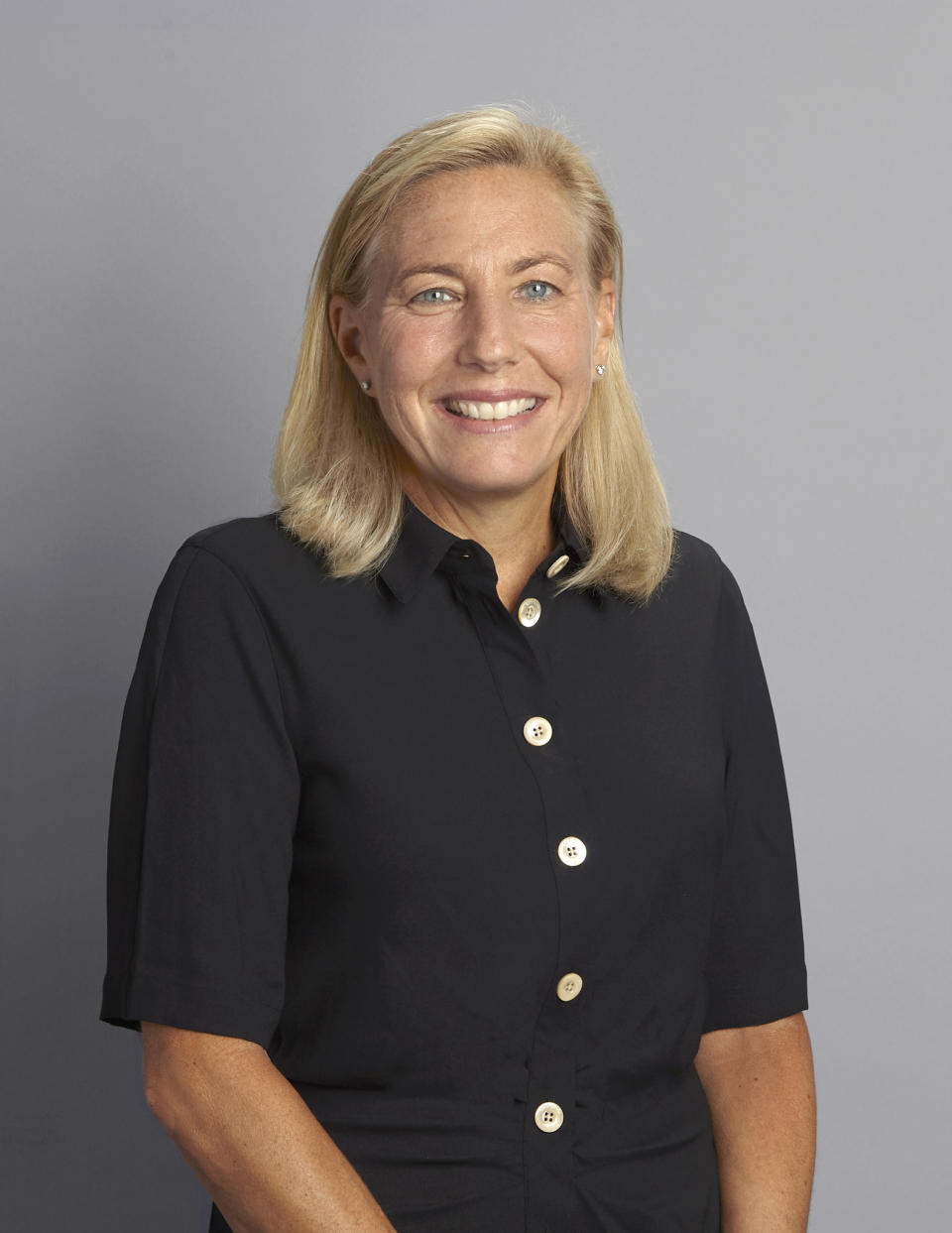
She said Tapestry has been looking at how to scale its business for “a long time.”
“As we think about the future, we wanted to explore opportunities to accelerate our agenda, our strategies, but anything we did had to be accretive to our organic growth plan,” the CEO said. “That was a pretty high bar. But as we looked about how to scale our capabilities, it became really clear that Capri is an exceptional fit on a number of different dimensions.”
She described Capri’s trio of brands — Versace, Jimmy Choo, Michael Kors — as “truly iconic brands.”
“And there aren’t that many truly iconic brands in the market,” she added.
“This combination expands our reach across customer segments, across geographies,” she said. “They have a complementary profile across geographies and product categories with their strength in apparel and footwear. Those are capabilities we’re trying to build and an opportunity for us to leverage our direct-to-consumer platform across their brands. And importantly, it gives us deeper access to a luxury consumer, which is attractive to us financially. It drives strong returns. So it’s a solid combination. It does hit that hurdle of being accretive to our organic growth plan. And strategically it’s a tremendous fit.”
For the first quarter of the year, Capri’s net sales dipped 9.6 percent to $1.23 billion, beating analysts’ expectations, while net income fell to $48 million from $201 million a year earlier. Versace’s sales fell 5.8 percent to $259 million, while Jimmy Choo increased 6.4 percent to $183 million and Michael Kors fell 13.8 percent to $787 million, Capri reported on Thursday.
The transaction marks the culmination of years of deal making by both companies and is the closest America has yet come to building a branded portfolio powerhouse in the image of LVMH Moët Hennessy Louis Vuitton or Kering, which posted 79.2 billion euros in sales and 20.35 billion euros in sales, respectively, for 2022.
But while analysts and observers were quick to draw parallels to the combined Tapestry and Capri with massive European luxury conglomerates, Crevoiserat quickly dismissed those comparisons. Asked if she was building the American LVMH, she said: “No, we’re building Tapestry. We’re focused on bringing iconic brands with heritage and design and craftsmanship and combining it with a modern consumer engagement platform. And from that we’ll deliver more innovation, more connectivity and more relevance for our brands. And we think that is luxury at its best.”
While having a larger portfolio can add complexity, it can also mean more stability, with stronger brands able to provide some cover when any one brand lags.
Fashion is watching keenly to see how the two firms come together and consume more space in the industry. That’s already started, as the deal was unveiled just before Ralph Lauren turned in stronger-than-expected first-quarter earnings.
“It’s an interesting move,” said Patrice Louvet, Ralph Lauren’s CEO, when asked about the acquisition during an interview. “As with all these moves and with everything in our industry, it’s ultimately all about execution.”
Louvet said there was not tons of direct competition between Ralph Lauren and the Tapestry and Capri brands, which in total focus more on handbags and shoes where Ralph Lauren is heavier in apparel.
“We have limited overlap with this new combination of brands,” Louvet said. “Limited overlap both from a category standpoint and from a price-tier standpoint.”
But with the deal, Tapestry will become increasingly unavoidable.
The combined company will have more than 33,000 employees and operate in 75 countries, and last year produced adjusted operating profits of nearly $2 billion.
John Idol, chairman and CEO of Capri, may not be part of the go-forward strategy.
“John is committed to leading the company through our transaction,” Crevoiserat said. “He and I have had a number of different conversations over months as we’ve been talking about this tie-up. He’s excited about Tapestry being a great home for the brands and their portfolio and committed to leading through the transaction.”
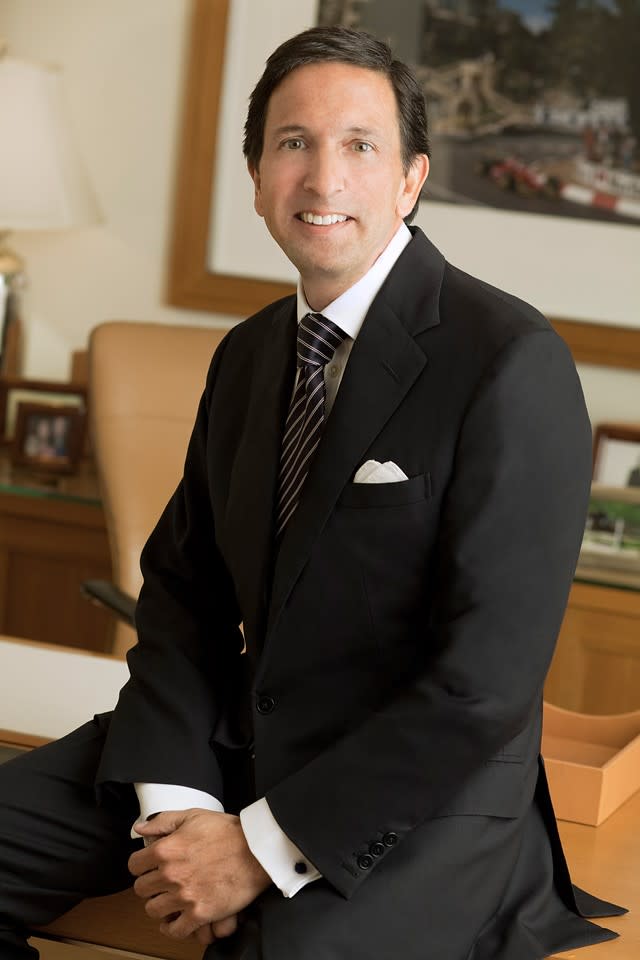
Idol, who was expected to leave the top post at Capri last year, decided to remain at the helm when Michael Kors CEO and his planned successor Joshua Schulman exited the company. Idol has been CEO of Capri since 2003, when he and his partners Lawrence Stroll and Silas Chou stepped in to build Michael Kors into a powerhouse.
In a statement, Idol said the transaction “is a testament to all that our teams have achieved in building Versace, Jimmy Choo and Michael Kors into the iconic and powerful luxury fashion houses they are today. We are confident this combination will deliver immediate value to our shareholders. It will also provide new opportunities for our dedicated employees around the world as Capri becomes part of a larger and more diversified company. By joining with Tapestry, we will have greater resources and capabilities to accelerate the expansion of our global reach while preserving the unique DNA of our brands.”
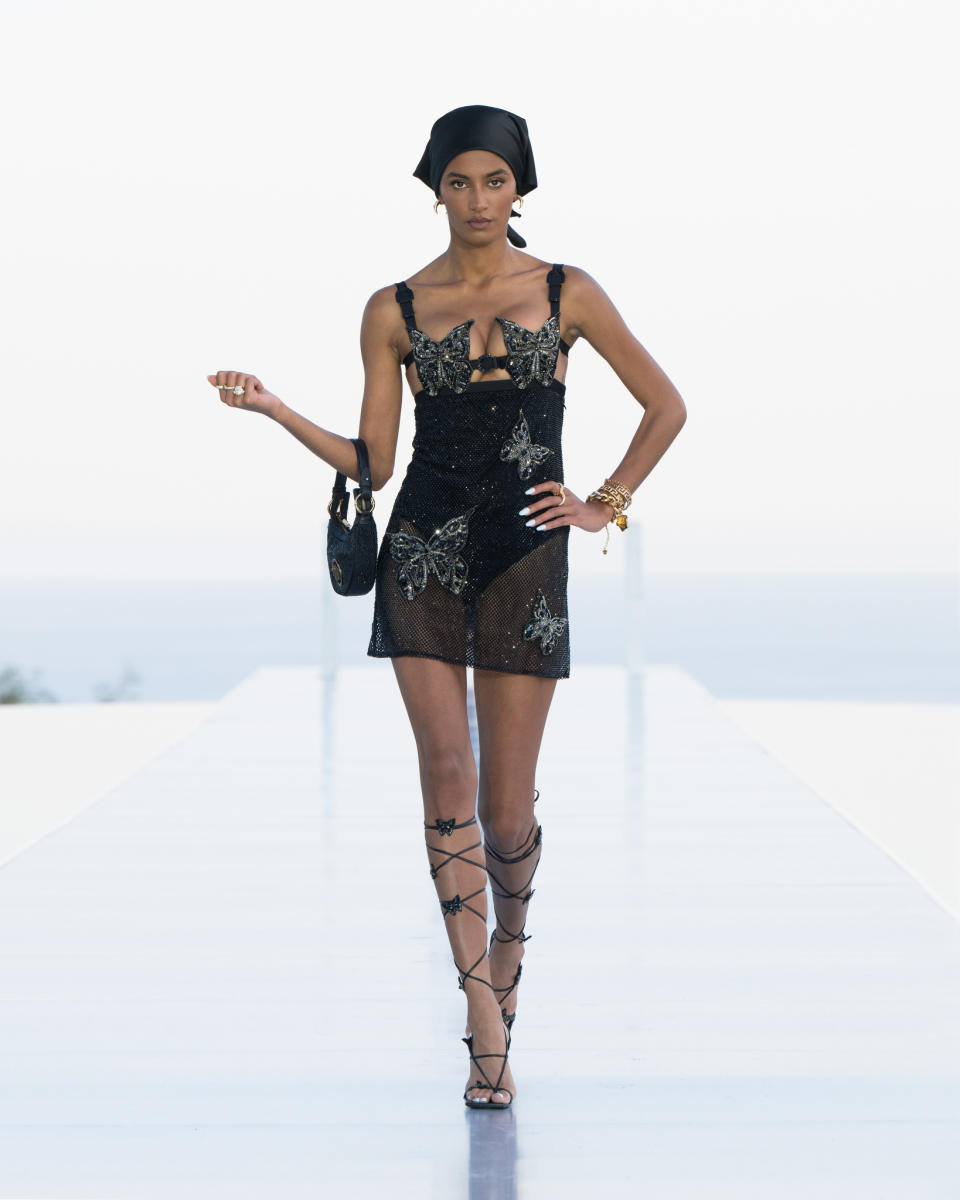
In a conference call with analysts, Idol pointed to the “current leadership” of Capri’s brands — Donatella Versace and Emmanuel Gintzburger of Versace, Sandra Choi and Hannah Coleman of Jimmy Choo, and Michael Kors and Cedric Wilmot of Kors — as integral to building “powerful and iconic luxury houses, each with their own unique identity.”
Under the deal, Tapestry is paying $57 a share, or $6.7 billion to Capri’s investors, giving the company an enterprise value of $8.5 billion. That represents a deal price of 9-times adjusted earnings before interest, taxes, depreciation and amortization. Just prior to the deal, Tapestry weighed in with an enterprise value of $12.2 billion.
The transaction was not subject to new financing, as Tapestry has already secured $8 billion in bridge financing from Bank of America and Morgan Stanley Senior Funding. The company, however, will suspend its share repurchase activity to pay down debt and anticipates having a leverage ratio of below 2.5-times debt-to-EBITDA within two years of closing.
Analysts were generally keen on the combination, while also acknowledging the complexities of the undertaking.
“Scale matters in this business,” said Oliver Chen, an analyst at Cowen. “So that’s a good thing for marketing spend, global diversification and lifestyle product development.”
Chen noted that the deal is “accretive because the Capri stock was cheaper” and said he was “bullish on Tapestry, their leadership, their culture.”
In particular, he said Tapestry could help the Capri brands become more tech savvy with its customer data platform and, in the case of Michael Kors, segment the outlet and the full price businesses.
One question mark is the antitrust approvals, which are pending on the deal and need to be obtained for the transaction can close next year.
“It will depend on how regulators choose to define the market,” Chen said. “That’s something to watch.”
Each case gets its own review. Few retail mergers have run into antitrust problems in the past as regulators have tended to look not at dominance in a certain part of the industry, but if consumers will still have access to products from multiple suppliers to ensure competition.
Jessica Ramírez, an analyst at Jane Hali & Associates, said Tapestry is the stronger player and can bring some of that strength to Capri.
Ramírez pointed to Coach’s turnaround over the past eight years.
“It’s been one of the best turnarounds,” she said. “They were one of the first brands to get the consumer to pay full price and they’ve been able to maintain that strategy. They only have their seasonal markdowns.”
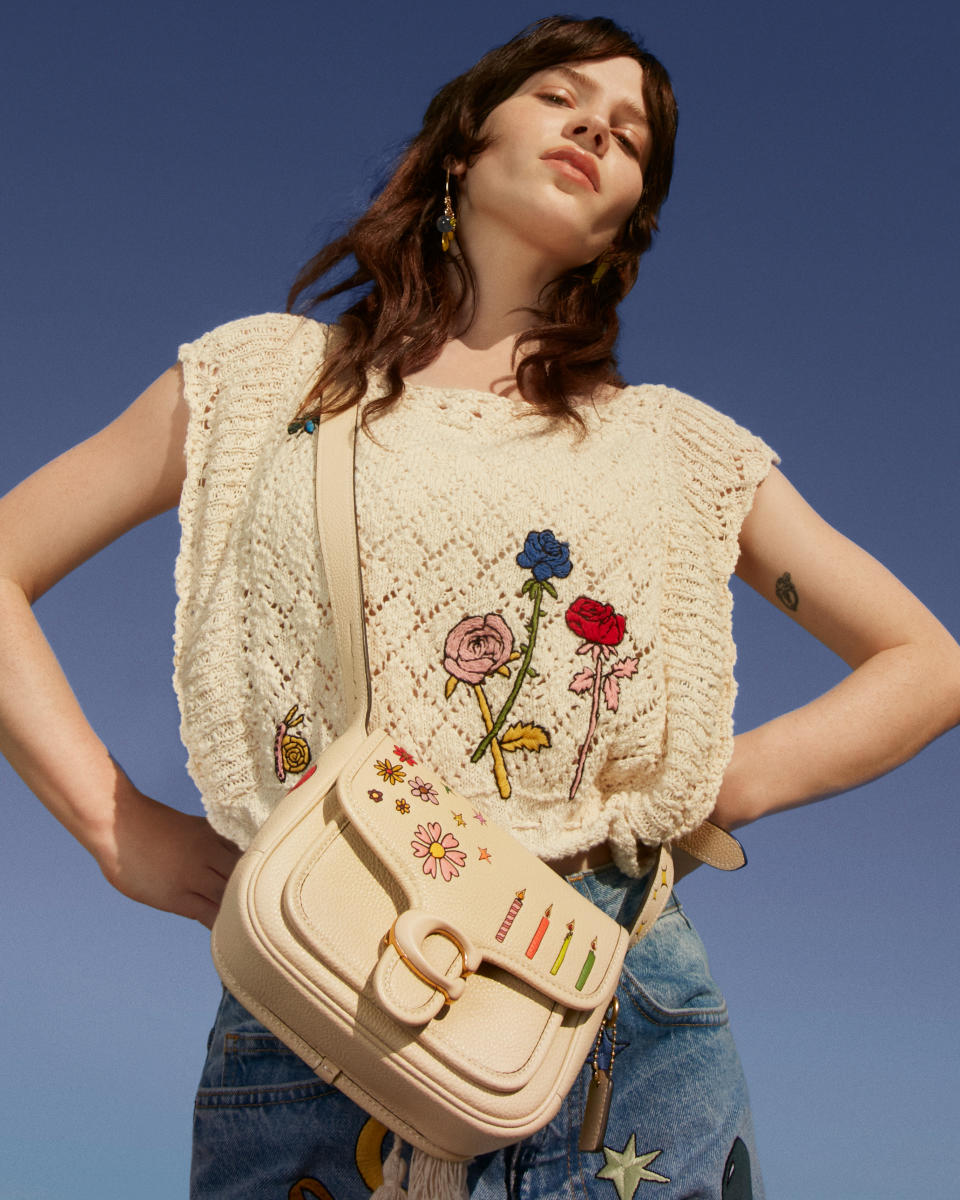
Tapestry also gains from Capri. “When you look to the Tapestry business, they have a strong business, a better retail strategy that’s much healthier and has helped [them] navigate all these headwinds, but they don’t have that international exposure,” Ramírez said.
The deal also brings Versace into Tapestry.
Craig Johnson, president of Customer Growth Partners, noted: “Tapestry has long targeted becoming a bona fide ‘house of luxury’ like Kering or LVMH, but its current brands are near-luxe rather than true luxe. Capri gives Tapestry a toehold in the true luxe world — with both Versace and Choo. Even though Kors is by far Capri’s largest brand, over time, Versace may well be the real ‘jewel in the crown’ with prospects towards selectively expanding distribution in North America, where the brand is under-penetrated.”
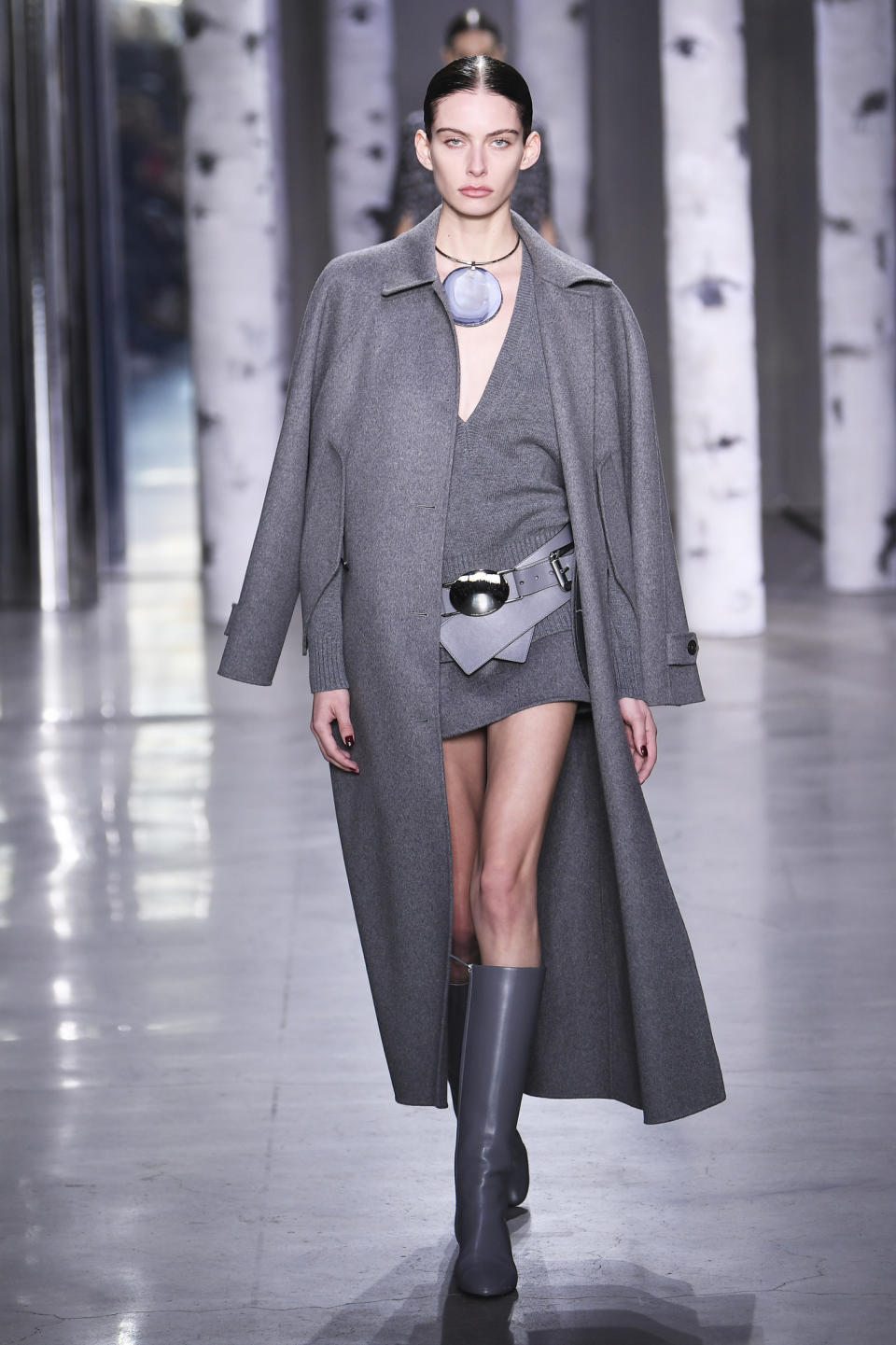
Neil Saunders, managing director of GlobalData, agreed that “Versace and Jimmy Choo are both powerful additions that can be nurtured and swung into growth fairly easily. The Michael Kors brand, which is the biggest part of Capri Holdings, is more problematic. Its positioning and distribution are not fully optimized, and this has been reflected in its continued weak performance.
“Tapestry has plenty of experience of reviving problem brands from its turnaround of Coach, which had become ubiquitous and sullied through constant discounting and promotions,” Saunders said. “Kate Spade was also in a similar position when Tapestry acquired it and is now emerging in positive form from a successful reinvention. The same thinking can arguably be applied to Michael Kors, but the more complex nature of the brand will make any revival much more difficult and time-consuming.”
And Ike Boruchow, an analyst at Wells Fargo, said the deal is “obviously transformational for Tapestry and reshapes the landscape of the handbag space, particularly in the U.S. The addition of Michael Kors cements Tapestry as the number-one player in the accessible luxury handbag market in the U.S. by a wide margin.”
Now the company just has to make that position work for it.
Best of WWD

